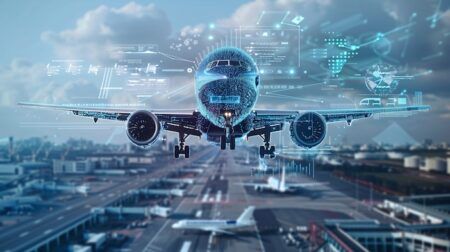The French government has unveiled a plan of historic importance to protect the globally recognised expertise of a community of hundreds of interdependent French and European companies, both large and small. Underpinning this ambitious plan is a desire to build the aerospace sector of the future – a digital, connected future that is both sustainable and inspires confidence.
The Covid-19 health crisis has affected, and continues to affect, hundreds of thousands of people worldwide. We know what a devastating impact it is having on the world economy, particularly the air transport sector, with airlines having to cancel 90% of their flights in Europe in April because of lockdown measures in different countries. Dwindling demand has obviously dealt a blow to airlines’ financial capacities, and this is having a knock-on effect on the entire industry, from aircraft manufacturers to equipment suppliers, from major corporations to family businesses.
The French government’s €15 billion plan, which includes financial aid, investment support and State-backed loans, will help companies weather this sudden, lasting and unprecedented crisis. By preserving as much of this unique skills base as possible, and protecting the local know-how that creates so much value for the economy, the plan will strengthen the competitiveness and leadership of Europe as a whole, and France in particular, with respect to major Asian and North American competitors in this unforgiving industry. The aim is to give aerospace the means to finance its continued growth and development in a sustainable and competitive fashion.
The plan will allow the industry to shape its future. It will help speed up the ecological transition of the entire sector by pursuing the development of tomorrow’s aircraft – aircraft that are more digital, more connected and more environmentally responsible.
With air traffic volumes expected to triple over the next 30 years, the ecological impact of the industry is a pressing issue for the public but also for businesses. The French and European aerospace sectors are keenly aware of this major concern and are hard at work today to develop a hydrogen-powered aircraft that could enter service by 2035. And with a target date of 2028, engine makers are busy developing a new generation of engines to help reduce carbon emissions by the air transport sector.
If we put all our expertise together, I think we can cut the sector’s emissions pollution well before those target dates of 2028 or 2035. Indeed, I think it is perfectly realistic to aim for a reduction of about 10% by 2023. How can this be done?
Thales is the only company in the world with expertise in both flight management systems – the onboard brains that handle the aircraft’s flight path – and air traffic management, where we are the world leader. The budget increases for the Civil Aviation Research Council (CORAC) will enable us to work with the French civil aviation authority (DGAC) to connect the brains of the aircraft to the air traffic management infrastructure as a way of optimising flight paths in real time, and reducing energy consumption. By interconnecting these extremely complex systems, our engineers will be able to optimise the trajectories of all flights in a given traffic area, with the aim of reducing aircraft fuel consumption by at least 10% from 2023.
In addition, the solutions we are developing today in the space sector based on the EGNOS satellite navigation system will improve navigation and airspace surveillance in all flight phases. By optimising trajectories, these new solutions will significantly improve passenger safety, economic efficiency and the environmental performance of the entire aerospace sector.
We are also going to speed up the development of a new generation of cockpits that are more intuitive and lighten pilot workload by taking decision support to the next level of sophistication. Given the enormous complexity of these systems, artificial intelligence and satellite connectivity have the potential to provide invaluable real-time decision support so pilots can focus even more closely on flight safety.
What’s more, thanks to our knowledge and capabilities in aerospace high tech, and our expertise in the field of quantum physics, we can envision sensors that improve considerably on traditional solutions, by factors of at least 10 to 100 and, in some cases, even 1,000.
A case in point is cold atom technology for quantum inertial navigation sensors. These sensors improve aircraft positioning by a factor of more than 1,000 without having to rely on GPS signals. One day, they will enable aircraft to navigate and land with pinpoint precision without a GPS signal, whereas an aircraft taking off from Paris today could only touch down in New York with a precision of a few kilometres if it did not have GPS.
The aerospace aid plan is about developing the future of aviation, with less fuel wasted, fewer risks for passengers and crew, and aircraft that are more environmentally responsible, safer to fly and more economical to operate. It is about building a future we can all trust for the aviation industry, that will restore the public’s faith in air transport all over the world. Because air travel is not just the safest mode of transport – it is also synonymous with freedom and human discovery.






